Stewart Reed is an American transportation designer of some note. He’s designed several significant cars, including one for dune buggy pioneer Bruce Meyers plus a Bugatti for noted art deco and French Curves mega collector Peter Mullin.
He still maintains a personal design consultancy for special projects, but his main gig now is Chairman of the Transportation Design program at Art Center (College of Design) in Pasadena, California.
Many of autodom’s best-known designers are Art Center grads including Peter Brock, Ken Okuyama, Henrik Fisker, Jason Castriota, and Chip Foose, to name but a few. And Reed has, and has had, great cars in his real and metaphoric garage: Porsches, Alfas, a breathtaking DeTomaso Mangusta, an MG/TC, a Volvo 1800ES, two Citroen SMs over time, and others.

You may wonder how and why a humble, olive green 1958 Mercedes-Benz 180D is now among his prides of the fleet – you know the 180D – one of the tens and hundreds of thousands of “Ponton” platform sedans Mercedes-Benz produced for worldwide consumption, from 1953 through 1962.
Its upright grille, three-pointed star hood ornament, and bubblicious fender lines are familiar to the point of being ubiquitous.

Ponton (pronounced “Pawn-tawn”) is the German version of “pontoon” affectionately affixed to this Fritz Nallinger body design describing the look of its somewhat boatlike front hood and fender shapes.
Over its decade long production run, this platform was configured in four-door sedan, extended length limo, coupe, convertible, cab, and chassis plus pickup truck body styles, and for decades proved among the world’s most hearty and familiar taxicabs; this chassis architecture was Mercedes-Benz first all-new post-WWII model lineup.
A smorgasbord of powertrains has found their way under that sculpted bonnet to which the grille is mounted. Sturdy, solid, reliable, comfortable, yes. Exciting? Not in the usual ways.

Back to Mr. Reed. Or more appropriately, Mr. and Mrs. Reed. Stewart and wife Nancy decided to sneak away to idyllic Balboa Island, a trendy, toney, and California beachy piece of Southern California’s Newport Coast, for their 40th wedding anniversary.
On the Saturday morning of their weekend getaway, they stumbled into a small cars n’coffee meet on a side street near their breakfast stop. There weren’t all that many cars, and it was clear that the group comprised a decidedly locals-focused, uber casual gathering.

The Reeds walked around a bit and spotted this super clean, highly original, charming olive green 1958 180D. It immediately spoke to them on very similar levels.
Nancy Reed gasp remarked to her husband that “my folks had a car just like that” to which Stewart of course replied “really? My dad also drove one just like this too.”
Upon closer inspection, they saw a note in the rear window, barely larger than a “little yellow sticky” announcing to anyone standing close enough that the car was for sale.

Mrs. Reed exclaimed, “Let’s buy it!” They connected with the owner’s representative right then and there, got the rundown on the car’s history, and bought it on the spot.
Like everything else about this car, the odometer didn’t lie; reading just less than 50,000 original miles spread over its 60 some years. The gent representing the car owns a small restoration shop, and the little Benz was put in his care to recommission mechanically and freshen it up for sale.
An original California car, wearing mostly original paint and all as-factory mechanicals, was donated to the local Salvation Army (charity thrift store) out of an estate. The charity had no need for the car, so for them, its highest and best use was to sell it for the funds it could raise.

The car was largely as built, in its original colors, and overall in marvelous, if dry and tired condition from non-use, yet still wore its original “black and gold” California license plates.
The shop freshened up and detailed the paint, and redid much of the interior in colors and materials as close to the original as could be sourced, also adding more modern safety belts.
The engine, fluids, and mechanicals were refreshed and tuned. The die was cast, the hook set and the deal was done. Stewart and Nancy Reed now owned the car of their parents’ dreams.
The Reeds’ new dream machine is a modestly equipped, no-frills 180D which means it’s powered by the 1767cc OM636 Bosch mechanically fuel-injected four-cylinder diesel engine, rated at no more, and no less, than 40 horsepower at 3200 rpm, backed by a 4-speed manual (with shift on the column) transmission – we could say it’s a “four on the tree” which is hardly the most convenient of rhymes.

A detailed walk around the car evidences not opulence but quality. This car was realized as much by engineers as it was by designers. There’s no wood trim, deep rugs, or cushy leather, but the chrome is deep and shiny. CD, Bluetooth, 47-way power seats, SatNav, and backscratcher? Not here, pal.
So many little bits today that would be shaped in molded plastic are instead stamped or cast of metal, then beautifully finished. The heavy doors close with a solid mechanical thunk.

From the outside looking in, the window line doesn’t at first seem particularly generous, but when inside, the car feels relatively airy with good visibility. The 13-inch road wheels are steel, with those iconic handsomely finished bright metal three-pointed star hubcaps, partially finished in body color paint.
The engine bay is pleasantly mechanical and unadorned of frippery, yet well finished and immaculate. The large and usefully shaped trunk sports the original spare tire. The 8.50-13 bias-ply tires all around are modern reproductions in the original size and similar tread pattern.
The gray vinyl and cloth interior are welcoming, if not lavish, much more pleasant than the hard black vinyl benches that a yeoman taxi model would have had. The seats are firmly supportive but seem tailor-made for both long cruises or just bopping about town.

Starting (and stopping) the engine at first comes off a bit odd but is easy once learned. This engine has old-school glowplugs that must be warmed prior to light off when the engine is cold.
Starting functions are administered by an umbrella handle shaped lever jutting from just under the dashboard; flick the ignition key to “on” then twist the umbrella handle to crank the starter, and the engine fires easily, quickly settling into that familiar, comforting rattle-purr that everyone recognizes of an old Mercedes-Benz diesel.
Clutch pedal pressure is firmly moderate, with an easy, linear release. The 1.8D boils out so much low-end torque that it takes little throttle to pull off a clean getaway, and the car will roll along at a few mph in first gear at idle.

The shift to second comes quickly and easily, and on through the rest of the gears with no drama – the clutch and shifter operate so smoothly, and intuitively this would be a great car for someone to learn how to drive with a manual transmission. “Dumping” the clutch and killing the engine is near impossible to do unless you’re doing it on purpose.
It wasn’t long before I made my first attitudinal mistake at the wheel; the interior road around Art Center is paved with speed bumps every few hundred feet or so, and not knowing how the little Ponton’s suspension would react to them, I slowed a bit before cruising over each one.
From the front passenger seat, Stewart said “don’t slow down, just hit ‘em as fast as you want.” And of course, knowing his car and this road, he was right. I stopped slowing down, and the green machine just clomped over them with no drama. The car’s sturdy suspension and relatively compliant, tall sidewall 13-inch rolling stock absorb the flat wide asphalt bumpers as if rolling over a candy wrapper.

Soon I found myself speeding up to them to see if I could upset the 180’s applecart. Sorry, but NOT! And remember, not a computer-aided damper, air spring, or rubber mounted subframe in sight.
With only 40 ponies on tap, you’d expect acceleration to be leisurely, and you won’t be disappointed in that regard. Yet strangely, it’s enough for pootling around town and even rolling 55-60mph on the freeway.
Fuel economy was factory estimated at near 30mpg which seems entirely achievable. Climbing long hills usually means a downshift and a matted throttle pedal, but the little guy gets there with nary a complaint. Just not quickly.
I asked designer and design educator Reed how and why the Ponton still appeals. He replied that “It all begins up front, as that identifiable grille sets the tone for the brand; it doesn’t matter if it’s larger on a big car or smaller on a more compact machine, the grille/lighting/vents visage tells you and everyone else what you’re driving.

While the ‘three box’ shape is purposeful, on this car it’s softened with just enough curves and that rounded rump. And the detailing is precious; just look at the cute little amber marker lights, in those beautiful chrome housings, sitting proud up on the front fenders and the brushed satin metal window surrounds.
Yet there’s nothing frivolous; the shapes are practical and solid yet still appealing. You can tell that an overriding design/engineering ethic guided everything about this car. Considering that all that you see or touch speaks of quality, and the fact that it’s a Mercedes-Benz, it comes across as humbly upscale.”

And it certainly doesn’t hurt that they always have that three-pointed star upfront to follow anywhere Nancy and Steward Reed want the 180D to take them.
Photography by Mel Stone Photo
Our Thanks: Art Center for the use of its spectacular campus.


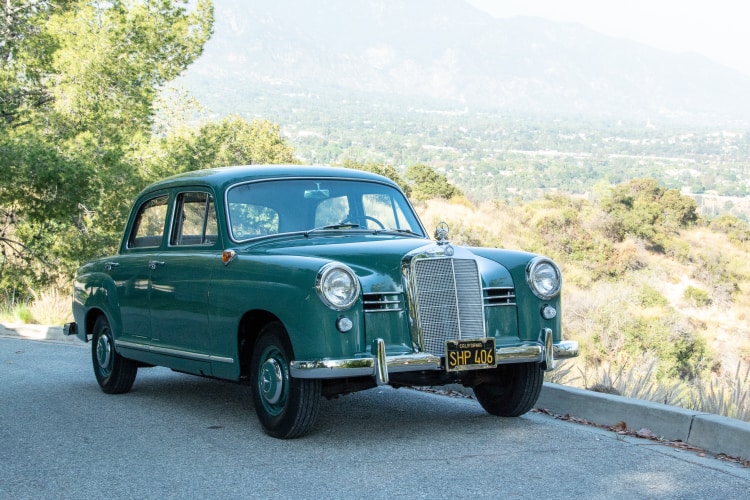
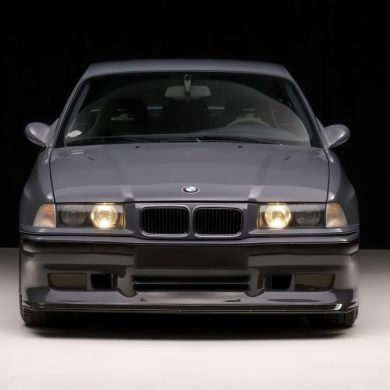

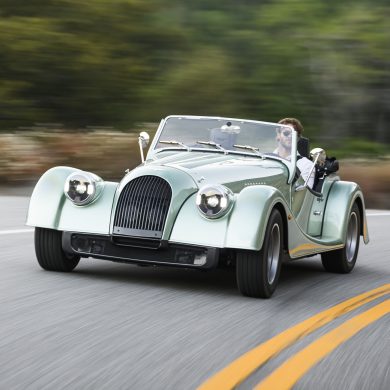
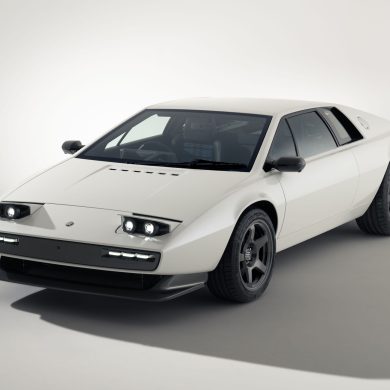

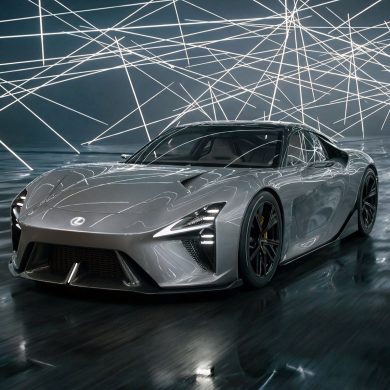


Beautiful classic! Now if we could just convince Stu and Nancy to show it at EyesOn Design on September 19th!!
It’s good to see the 180 getting a little publicity. I still own the 180 (petrol) that my father collected from the factory in 1960.
As the pedant I am I feel bound to point out some misunderstandings. There is wood on the dashboard, but it’s made to look like Bakelite! The ‘Ponton’ name refers to the subframe across the car carrying the engine, ‘box and suspension, which can be removed as a piece. One journalist thought it like a pontoon bridge. And the car does have a rubber mounted subframe, as this unit is mounted on rubber bushes.
Sorry to be so picky.
The Ponton is much less known in England, and most people have never seen one. Even on its many European trips it is quite a novelty.